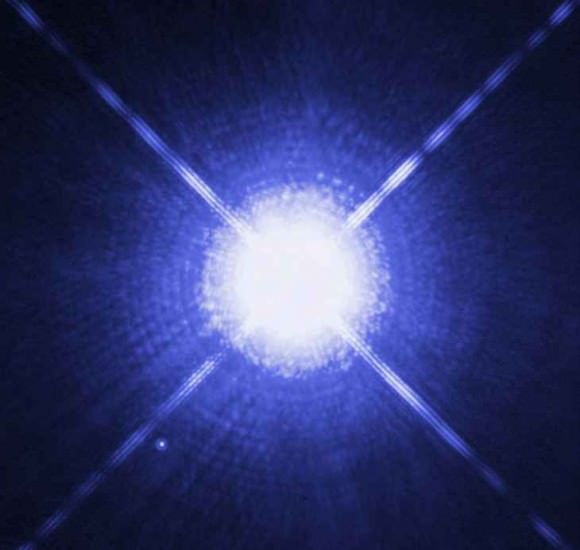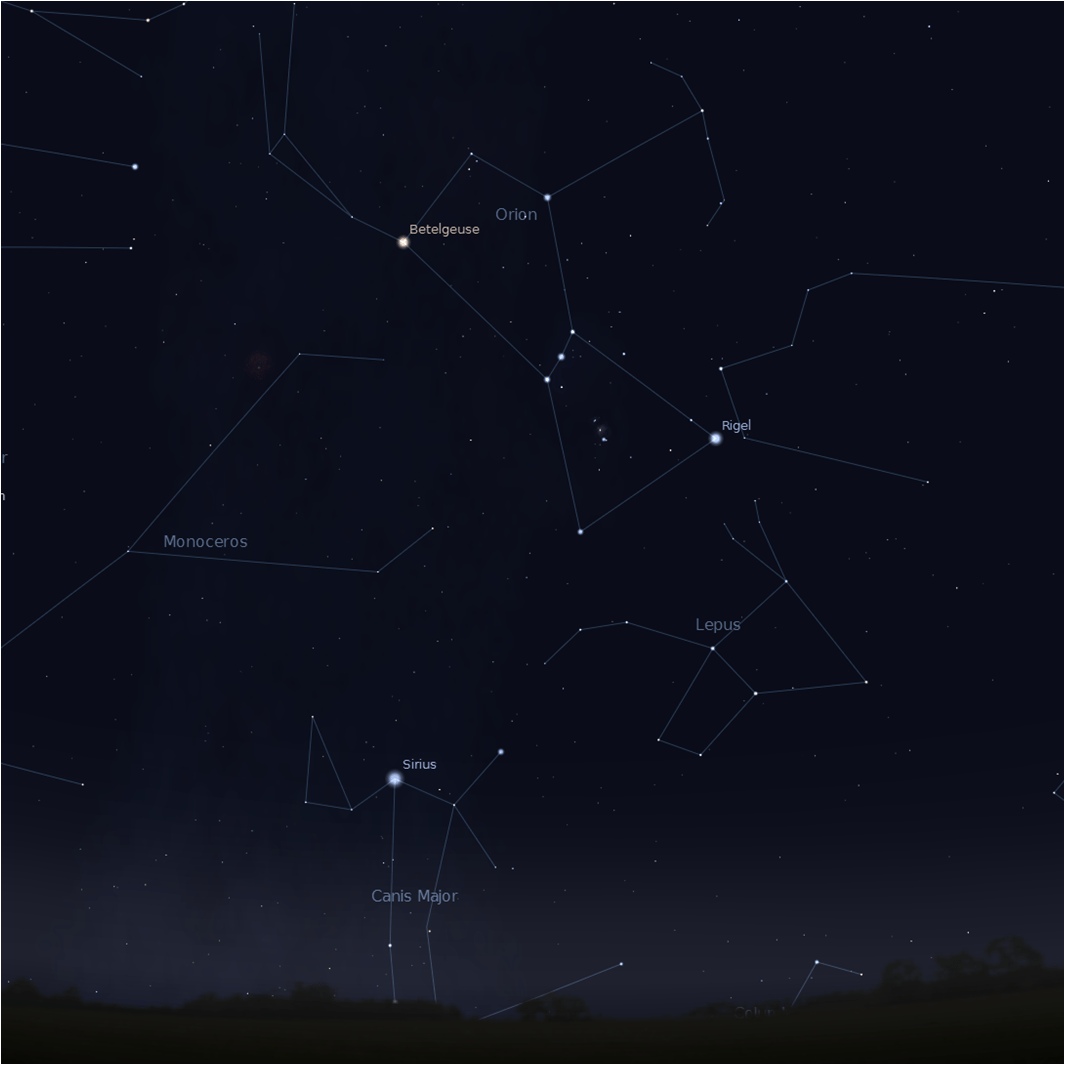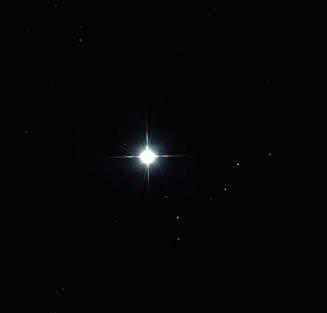[/caption]
At this time of year, after dark we in the northern hemisphere are able to see the mighty constellation of Orion rise high in the sky with a very bright companion in a nearby constellation: Sirius – The Dog Star.
Sirius is the brightest star in the sky and can easily be found in the faint constellation of Canis Major to the left and below Orion. Its name comes from ancient Greek meaning “glowing” or “scorcher.”
Sirius (α CMa) is the alpha star in this trusty hound and is roughly 8.5 light years away from Earth, making it one of the closest stars to us. It has a tiny companion star making it a binary system composed of “Sirius A” the main component (which is a white main sequence star) and “Sirius B,” a white dwarf star. As seen with the naked eye, Sirius can be seen to twinkle many different colours low in the winter evening sky.

So why does Sirius twinkle?
It’s not just Sirius that twinkles; all stars twinkle. Light travels many light years from stars and right at the end of its journey, it hits Earth’s atmosphere, which consists of nitrogen, oxygen and other gasses.
Earth’s atmosphere is constantly swirling around, and wind and air currents etc distort light travelling through it. This causes the light to slightly bend or shimmer and the light from distant stars twinkle. An extreme, more down-to-Earth example of this would be heat rising off of a road or a desert causing objects behind it to distort, shimmer and change colour.
Sirius appears to twinkle or shimmer more than other stars for some very simple reasons. It is very bright, which can amplify atmospheric effects and it is also very low down in the atmosphere for those in the northern hemisphere. We are actually looking at it through a very dense part of the atmosphere which can be turbulent and contain many different particles and dust. The lower towards the horizon an observer is looking, the thicker the atmosphere. The higher an observer is looking, the thinner the atmosphere. This is also the cause of colourful sunrise and sunsets.
(Addition due to the questions in the comment section: planets don’t usually twinkle because they are closer and therefore bigger — they are disks of light instead of faraway points of light. The larger disks of light usually aren’t distorted; however if you are looking through especially turbulent areas of our atmosphere, and even sometimes when looking at planets that are low in the thicker parts of the atmosphere, they will twinkle. Phil Plait, the Bad Astronomer explains it very well on his website.)
This optical illusion is a big pain for astronomers and some very large telescopes such as those in Chile and Hawaii use special equipment and techniques to reduce the effects of the atmosphere.
One of most famous telescope of them all, the Hubble Space Telescope doesn’t get affected at all by our atmosphere as it is in space, making the light from stars crystal clear.
Twinkle, twinkle little star, now we know what you are (and why you are twinkling!)


